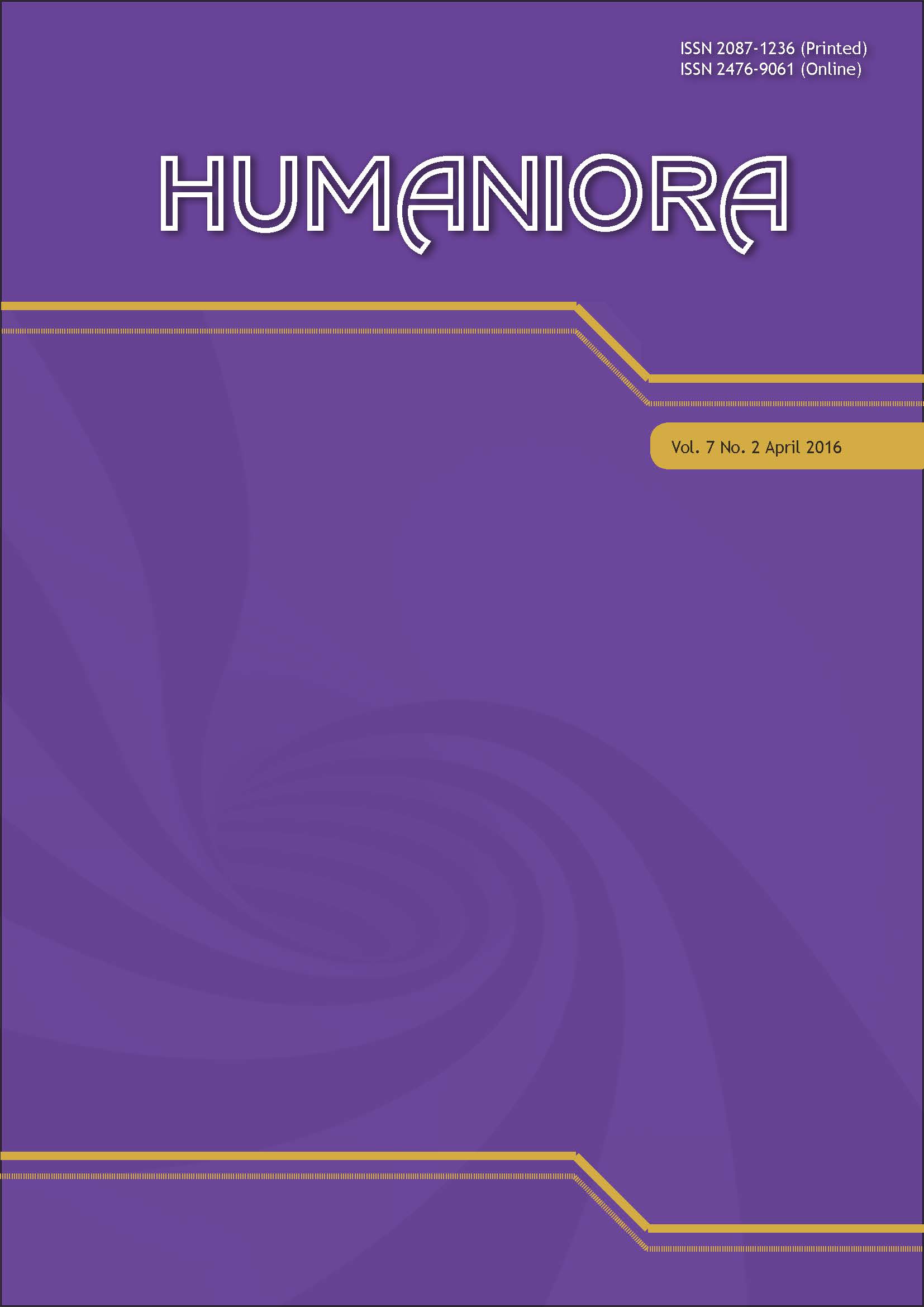Folk-Culture Development Under Surrounding-Zones Theory Perspective: An Observation of Hakka’s Chinese New Year Custom in Bangka Island Indonesia
DOI:
https://doi.org/10.21512/humaniora.v7i2.3532Keywords:
Bangka island, hakka, Chinese new year, folk-customAbstract
Hakkanese experienced several major migrations and ultimately distributed in every corner of the world. From the earlier period, the Hakkanese believed that someone should return to their origin until they settled down. Among much Chinese folklore, the most notable moment of the Hakanese was the transition between the old and the new, commonly called the Chinese New Year or Spring Festival custom. New Year custom roughly started from the beginning of the twelfth of the 23rd lunar month has been extended into the Lantern Festival. From the twelfth of the 23rd lunar month, it began to enter the Small Year festivals, and the Chinese were beginning to prepare series of activities which deals with throwing away the old while welcoming the new. Until New Year Eve, which was the culmination of the Year’s custom, the whole family gathered happily to meet the spring season. New Year activities would continue until the Lantern Festival. But for the Hakka people, the festive atmosphere and activities would continue until the 20th day of the first lunar month, which was called Tian Chuan Festival. After that, the New Year was ended completely. The research method applied was the qualitative method with observation and library research regarding Bangkanese Chinese festival. The observed population in this research is the Hakkanese community in Bangka. This article finds that the Chinese community in several regions in Indonesia still maintains and preserves the original form of the indigenous culture. It can be seen from the Lunar New Year tradition runs by the Hakkanese in Bangka. At the same time, it also reflects the vitality of folk culture and the values of its existence.
References
Ren, G. (2007). Chuantong Jieri. Huangshan Shushe.
Wu, B. (2007). Zhongguo Minjian Shenpu. Liaoning Renmin Chubanshe.
Yan, L. (2009). Zhongguo Chuangtong Jieri: Xisuji qi Neihan Gaishu. Heihe Xue Kan (9th Ed).
Zhang, Y. Q., & Wang, S. (1985). Yuan Jian Lei Han. Beijing Shi Zhongguo Shudian, 13.
Zhou, X. (2008). Minsu Xue de Lishi, Lilun Yu Fangfa (Shang Ce). Shangwu Yinshuguan.
Zou M., Gao, Y. (2011). Minjian Guonian, Yaxiya Minsu Yanjiu, Xueyuan Chubanshe (8th Ed).
Downloads
Published
How to Cite
Issue
Section
License
Authors who publish with this journal agree to the following terms:
a. Authors retain copyright and grant the journal right of first publication with the work simultaneously licensed under a Creative Commons Attribution License - Share Alike that allows others to share the work with an acknowledgment of the work's authorship and initial publication in this journal.
b. Authors are able to enter into separate, additional contractual arrangements for the non-exclusive distribution of the journal's published version of the work (e.g., post it to an institutional repository or publish it in a book), with an acknowledgment of its initial publication in this journal.
c. Authors are permitted and encouraged to post their work online (e.g., in institutional repositories or on their website) prior to and during the submission process, as it can lead to productive exchanges, as well as earlier and greater citation of published work.
USER RIGHTS
All articles published Open Access will be immediately and permanently free for everyone to read and download. We are continuously working with our author communities to select the best choice of license options, currently being defined for this journal as follows: Creative Commons Attribution-Share Alike (CC BY-SA)




















